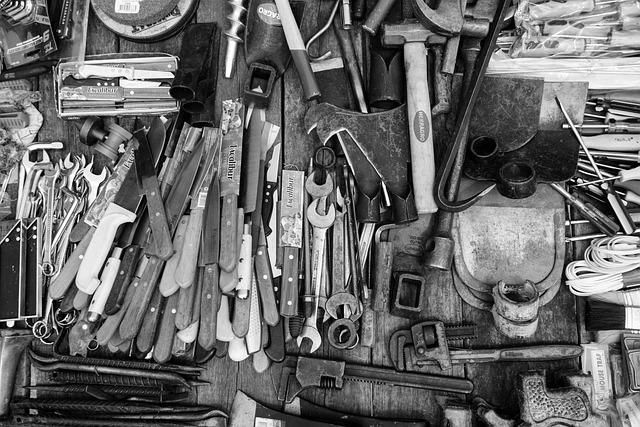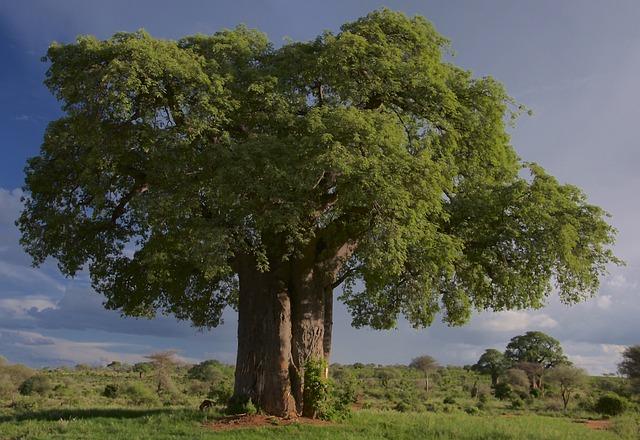In a groundbreaking revelation that sheds new mild at the technological prowess of our historical ancestors, researchers have unearthed a number of bone equipment in Tanzania which might be estimated to be round 1.5 million years previous. This exceptional in finding, which incorporates implements crafted through early hominins, represents the oldest recognized examples of bone equipment, considerably increasing our figuring out of human evolution and the cognitive functions of our forebears. The results of this discovery now not best problem present timelines relating to tool-making practices but in addition be offering precious insights into the day-to-day lives and survival methods of early people of their setting. As scientists proceed to discover the importance of those historical artifacts, the findings promise to reshape our comprehension of the milestones in our evolutionary adventure.
The new discovery of one.5 million-year-old bone equipment in Tanzania is reshaping our figuring out of early human era and ancestry. Those historical artifacts, believed to be the oldest in their sort, point out that our ancestors have been able to refined tool-making lengthy sooner than the appearance of stone implements. Researchers have discovered that those equipment weren’t simply useful; they exhibit a degree of workmanship that means early people possessed a deeper cognitive skill and social group than in the past assumed.
Research of the equipment, crafted from the bones of huge animals, unearths a number of intriguing facets:
- Subject matter Usage: The choice of bones for tool-making implies an intensive figuring out of to be had assets.
- Technological Innovation: The strategies utilized in shaping those equipment display early indicators of an evolving technological complexity.
- Behavioral Insights: The presence of those equipment suggests communal actions, indicating social constructions amongst early people.
Researchers consider those findings will encourage a reevaluation of early hominin habits and their position within the evolutionary tree. The artifacts now not best enrich our wisdom of tool-making practices but in addition open up new avenues for exploring the ecological and social prerequisites of early human existence.

Research of Craftsmanship Highlights Complex Cognitive Skills of Early People
The invention of the traditional bone equipment in Tanzania provides profound insights into the cognitive functions of our early ancestors, dropping mild on their skill to control fabrics and have interaction in complicated problem-solving. Those artifacts, relationship again 1.5 million years, illustrate a exceptional jump in craftsmanship that means a degree of making plans and forethought in the past unassociated with hominins of that generation. Researchers speculate that the cautious crafting of those equipment signifies an figuring out in their setting and the desires in their group, highlighting social finding out as an crucial issue of their growth and survival methods.
Additionally,the usage of bone as a medium calls consideration to the resourcefulness of early people,showcasing their skill to evolve and innovate the usage of to be had fabrics. Not like the repeatedly discovered stone equipment, those bone implements disclose a numerous toolkit that most likely served more than a few sensible purposes, from looking to meals preparation. The results of this craftsmanship lengthen past mere survival; it raises questions concerning the cultural transmission of information and talents inside teams, illustrating a foundational side of human evolution that underscores the mind and flexibility of our ancestors.

The invention of one.5 million-year-old bone equipment in Tanzania profoundly alters our figuring out of early human ingenuity and flexibility. Those artifacts,believed to were crafted through our ancestors,supply notable perception into tool-making ways and cognitive talents of hominins all the way through this era. This in finding emphasizes the significance of cultural transmission and the position of social environments in shaping technological developments. As equipment mirror the behaviors and wishes in their creators, they function markers of evolutionary growth and adaptation, suggesting that early people possessed a posh figuring out in their setting.
Additionally, this step forward invitations us to rethink the timeline of cultural evolution and the range of instrument use amongst hominin species. The presence of such historical equipment signifies that early ancestral teams have been most likely extra interconnected and leading edge than in the past concept. By way of learning the traits of those bone implements, researchers can dissect the useful facets and doable makes use of, dropping mild at the social constructions and survival methods of those early communities. Thru an intensive exam of those equipment, we will be able to start to map the intricate tapestry of early human existence and the sluggish development against extra refined cultural practices.

Preservation Demanding situations and Conservation Efforts for Tanzania’s Archaeological Websites
tanzania’s archaeological websites, house to one of the earliest proof of human innovation, face a lot of preservation demanding situations. Groundwater fluctuations,climate change,and extending tourism pressures threaten the integrity of those necessary places. Moreover, unsanctioned excavations and native land use give a contribution to a rising chance of wear and degradation. To handle those problems, native and world organizations are advocating for more potent protecting measures and sustainable tourism practices to safeguard those valuable assets.
Efforts to preserve Tanzania’s archaeological heritage come with:
- Neighborhood Engagement: Involving native communities in conservation methods fosters a way of possession and responsibility towards their heritage.
- Felony Frameworks: Strengthening regulations and laws geared toward protective archaeological websites is very important for mitigating unlawful actions.
- Analysis Techniques: Collaborative research between scientists and cultural heritage professionals can reinforce our figuring out of those websites, informing higher preservation ways.
| Preservation Problem | Conservation Effort |
|---|---|
| Local weather Exchange | Growing adaptive control methods |
| Unlawful Excavations | Enforcing stricter enforcement |
| Native Construction | Selling sustainable land use |

Long term Analysis instructions: Investigating the Context and Goal of the Gear
The invention of bone equipment relationship again 1.5 million years opens new avenues for figuring out the cultural and useful contexts of early human craftsmanship. Long term analysis will have to center of attention on inspecting the precise environments by which those equipment have been used,examining elements reminiscent of useful resource availability,tool-making ways,and social behaviors amongst early human ancestors. By way of situating those artifacts inside their archaeological context, researchers can higher seize the evolutionary importance of instrument use and the cognitive talents it most likely required.
Moreover, the aim at the back of those historical bone equipment warrants additional investigation. Questions on their meant makes use of—starting from looking and butchering to crafting different implements—may give insights into the day-to-day lives and survival methods of those early hominins. A multidisciplinary means,incorporating insights from anthropology,archaeology,and experimental archaeology,will likely be the most important in addressing those questions. Underneath is a desk summarizing doable analysis spaces and their importance:
| Analysis Space | Importance |
|---|---|
| Practical Research | Identifies particular makes use of and variations of equipment. |
| Contextual Research | Explores environmental elements affecting instrument use. |
| Cultural Implications | Investigates social constructions and information switch. |
| Comparative Research | Compares findings throughout other areas and species. |

The invention of one.5 million-year-old bone equipment in Tanzania supplies profound insights into early human innovation and the techniques by which our ancestors tailored to their environments. Such findings function necessary instructional alternatives, emphasizing the significance of archaeological analysis in figuring out human historical past. Faculties and museums can create dynamic instructional systems that concentrate on showcasing those artifacts, facilitating discussions about technological evolution and cultural heritage. This is able to come with:
- Interactive Workshops: Palms-on actions the place scholars can try to create identical equipment the usage of supplied fabrics.
- box Research: Organizing tours to archaeological websites, permitting scholars to have interaction at once with historical past.
- documentary Screenings: Appearing motion pictures that chronicle the invention procedure and importance of findings just like the bone equipment.
To additional reinforce consciousness, native communities can determine workshops geared toward exploring the relationship between historical practices and trendy craftsmanship. By way of inviting historians and archaeologists to guide discussions, contributors can achieve deeper insights into the evolution of tool-making and its affect on survival. Collaborative projects may come with:
| Job | Description |
|---|---|
| Public Lectures | Subjects masking early human existence and the importance of tool-making. |
| Artwork Competitions | Inviting native artists to create items impressed through historical equipment. |
| Show off Openings | Debuting presentations that includes the bone equipment along instructional fabrics. |
to sum up
the invention of those 1.5 million-year-old bone equipment in tanzania now not best reshapes our figuring out of early human ingenuity but in addition underscores the importance of East Africa as a cradle of innovation all the way through the Stone Age. As researchers proceed to investigate those historical artifacts, they supply a glimpse into the lives and functions of our human ancestors, highlighting their adaptability and resourcefulness in a converting setting. This groundbreaking in finding serves as a reminder of the complexities of human evolution and the profound legacy of our species.As additional research spread, we will be able to wait for much more revelations that can redefine the timeline of technological development and our ancestral narrative.The findings from this crucial website online give a boost to the significance of ongoing archaeological analysis in uncovering the mysteries of our previous and the resilience of those that walked the Earth lengthy sooner than us.
Source link : https://afric.news/2025/03/10/1-5-million-year-old-bone-tools-crafted-by-human-ancestors-in-tanzania-are-oldest-of-their-kind-livescience-com/
Writer : Jackson Lee
Put up date : 2025-03-10 17:05:00
Copyright for syndicated content material belongs to the connected Source.



